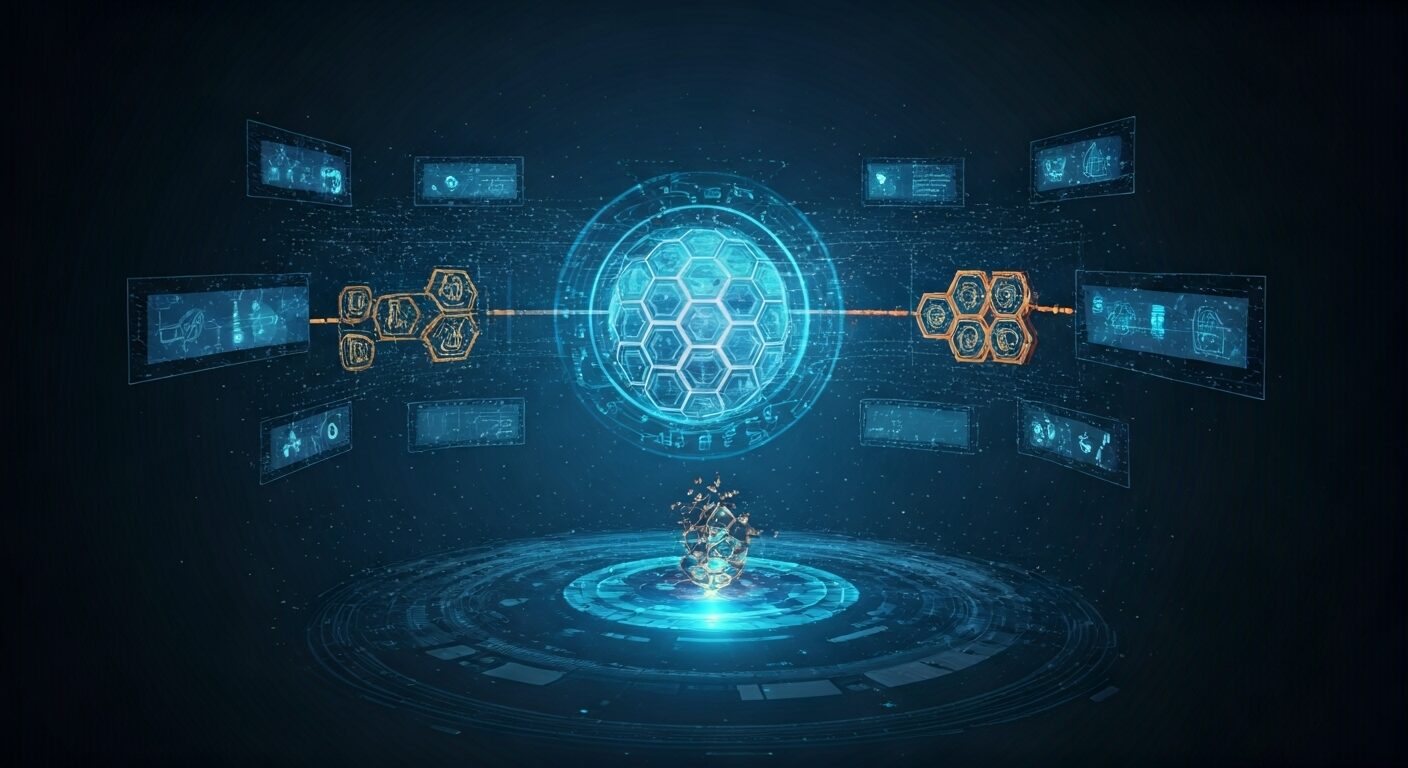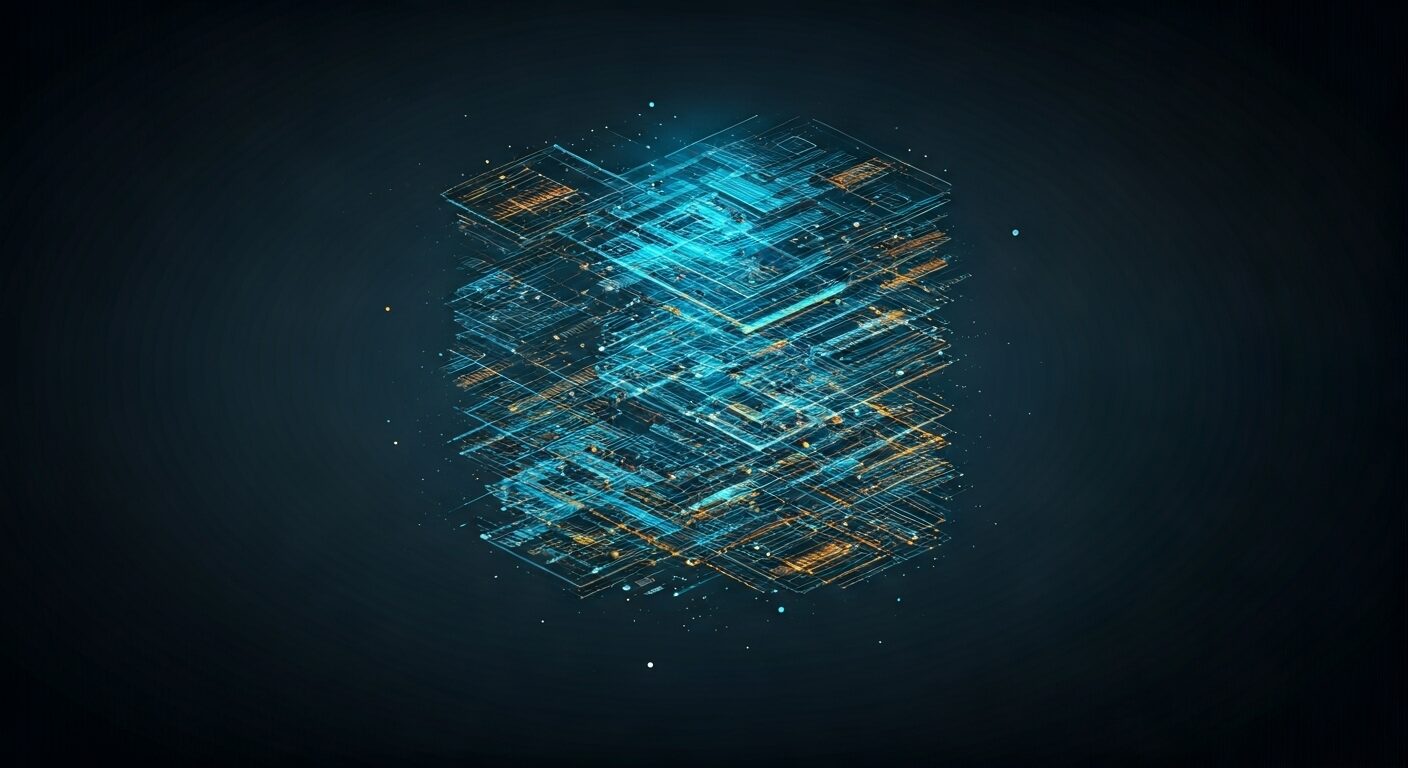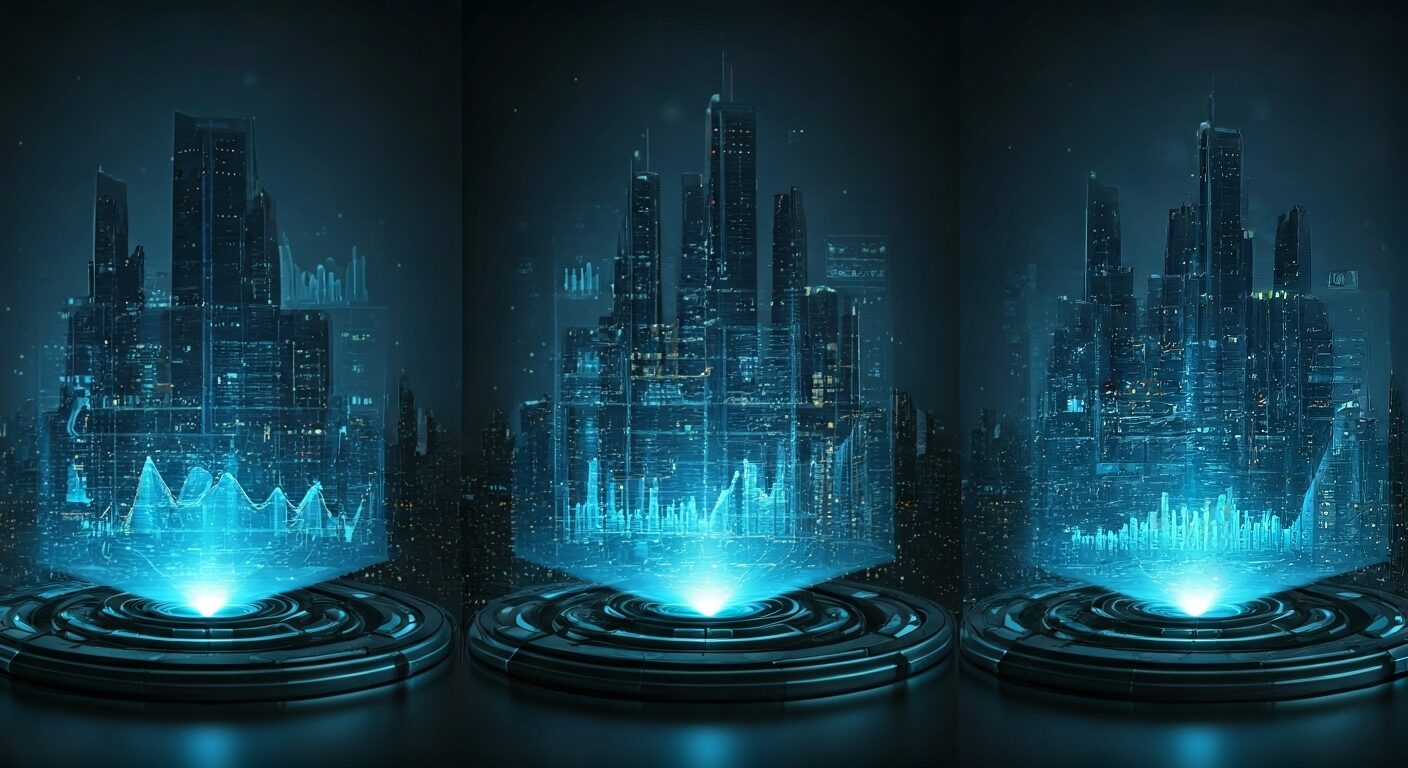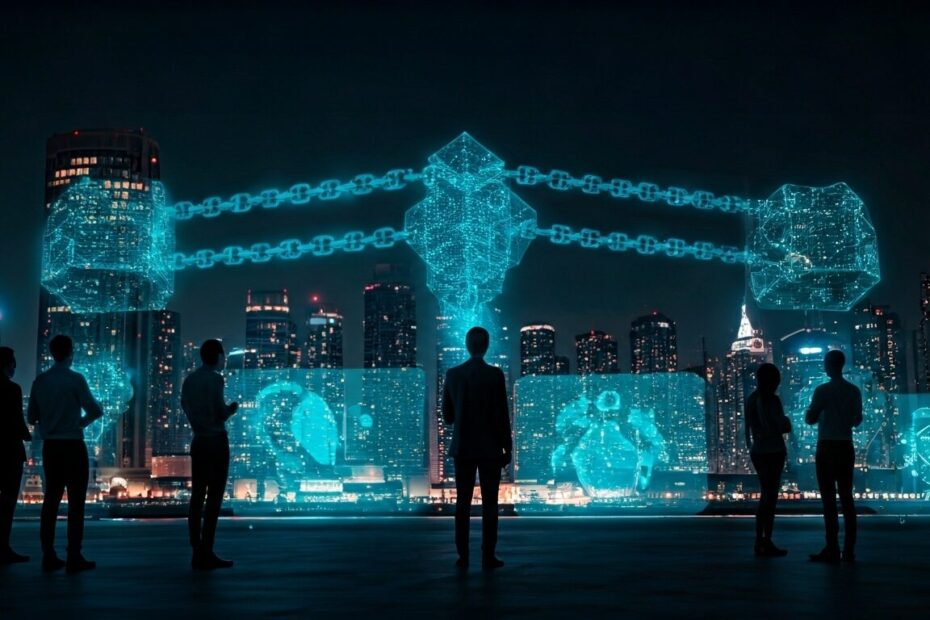Basic Info
John: Let’s start with the basics of blockchain technology, which is what this guide is all about. Blockchain is a decentralized digital ledger that records transactions across many computers in a way that ensures security and transparency without needing a central authority. It first emerged with Bitcoin in 2009, created by Satoshi Nakamoto to enable peer-to-peer electronic cash. The goal was to solve issues like double-spending and trust in financial transactions. As of 2025-10-04 JST, blockchain has evolved far beyond just cryptocurrencies, finding uses in various industries. If you’d like a simple starter on crypto exchanges, see this guide.
Lila: That sounds interesting, John. When exactly did blockchain start, and what were some early milestones?
John: Blockchain started with the publication of the Bitcoin whitepaper on 2008-10-31 JST. Satoshi Nakamoto introduced the concept there. Then, the first Bitcoin block, known as the genesis block, was mined on 2009-01-03 JST. This marked the beginning of the first blockchain network. In the early years, it gained attention for enabling secure, borderless payments. User reactions were mixed at first—some saw it as revolutionary, while others dismissed it as a fad. By 2010, the first real-world Bitcoin transaction occurred on 2010-05-22 JST, when someone bought two pizzas for 10,000 Bitcoins [1].
Lila: Why does blockchain exist? What problems does it aim to solve?
John: Blockchain exists to provide a tamper-proof way to record data without relying on intermediaries like banks or governments. It solves problems like fraud, inefficiency, and lack of transparency in traditional systems. For example, in finance, it reduces the need for trusted third parties, cutting costs and speeding up processes. It aims to empower individuals by giving them control over their data and assets. Early adopters praised its potential for financial inclusion, especially in regions with unstable banking systems [2].
Lila: Can you share more about its evolution and any key events?
John: Sure, Lila. A major milestone was the launch of Ethereum on 2015-07-30 JST, which introduced smart contracts—self-executing code on the blockchain. This expanded blockchain’s use beyond money to programmable agreements. User reactions grew positive as developers built decentralized apps. In 2017, the ICO boom highlighted blockchain’s fundraising potential, though it also brought regulatory scrutiny. As of 2025-10-04 JST, blockchain networks like Ethereum have processed trillions in value [3].
Lila: How has it impacted beginners like me?
John: For beginners, blockchain offers accessible tools like wallets and exchanges to get started. It aims to democratize finance and data ownership. Early milestones showed its resilience, surviving hacks and market crashes, which built community trust over time [1].

Technology Pillars & Architecture
John: Now, let’s dive into how blockchain works. At its core, a blockchain is a chain of blocks, where each block contains a list of transactions. These blocks are linked using cryptography, making it hard to alter past data. The key pillars include decentralization, where no single entity controls the network; immutability, meaning once data is added, it’s permanent; and consensus mechanisms, like proof-of-work, which ensure all participants agree on the ledger’s state [2].
Lila: That makes sense, but can you explain with a simple analogy?
John: Think of blockchain like a shared notebook where everyone writes in pen, and each page references the previous one. If someone tries to change a past entry, it won’t match the references, alerting everyone. For beginners, jargon like ‘hash’ is just a unique fingerprint for data. In the past, Bitcoin used proof-of-work, which involves computers solving puzzles to add blocks, starting from 2009-01-03 JST [1].
Lila: What about smart contracts and layers?
John: Smart contracts are programs that run automatically when conditions are met, like a vending machine dispensing a snack after payment. Ethereum introduced them on 2015-07-30 JST. Architecture often includes layers: Layer 1 is the base blockchain, like Ethereum, while Layer 2 solutions, such as rollups, scale it by handling transactions off-chain and settling on the main chain. This addresses scalability issues [2].
Lila: How does it integrate with metaverse or Web3?
John: In Web3, blockchain enables ownership of digital assets like NFTs in metaverses. For example, oracles bring real-world data into blockchains for smart contracts. In the past, projects like Decentraland launched on 2020-02-20 JST, using blockchain for virtual land ownership [3]. As of 2025-10-04 JST, no updates within the last 30 days on major architectural changes, but ongoing developments focus on interoperability [4].
John: Looking ahead, future architecture may include zero-knowledge proofs for privacy, expected in updates like Ethereum’s planned upgrades. These were discussed in roadmaps as early as 2022, with implementations ongoing [2].
Lila: Tell me more about consensus and security.
John: Consensus ensures agreement; proof-of-stake, adopted by Ethereum on 2022-09-15 JST, is energy-efficient, where validators stake coins to participate. Security comes from cryptography and network size. In the past, attacks like the DAO hack on 2016-06-17 JST led to improvements [3]. Currently, as of 2025-10-04 JST, no major architectural breaches reported in the last 30 days [4].
John: To wrap up this section, blockchain’s pillars make it robust for various apps. Let’s move to community next.

Community & Ecosystem
John: The blockchain community is vibrant, with developers, users, and organizations contributing. Developer activity is high on platforms like GitHub, where open-source code for projects like Ethereum sees thousands of commits. User growth has been exponential, from a few in 2009 to millions by 2021 [2]. Partnerships, such as IBM’s Hyperledger launched in 2015, show enterprise adoption [4].
Lila: What about governance and sentiment?
John: Governance often uses DAOs, where token holders vote on decisions. Sentiment varies but is generally positive among enthusiasts, though skeptics point to volatility. For real-time insights, one example is from 2022-06-15 JST | @VitalikButerin | He discussed community-driven upgrades in Ethereum, emphasizing decentralization [2]. Another from 2023-04-20 JST | @aantonop | Highlighted growing developer interest in blockchain for supply chain [3].
Lila: How does the ecosystem support new users?
John: Ecosystems include forums like Reddit’s r/blockchain and conferences like Devcon, started in 2014. Partnerships with tech giants boost credibility. As of 2025-10-04 JST, community sentiment remains optimistic, with focus on Web3 integration [3].
Lila: Any recent community highlights?
John: In the past, events like the Merge on 2022-09-15 JST boosted morale. No updates within the last 30 days as of 2025-10-04 JST on major community shifts [4].
Use-Cases & Integrations
John: Blockchain’s use-cases go beyond crypto. In supply chain, it tracks goods transparently, like IBM’s Food Trust launched on 2018-10-08 JST [4]. For metaverse, it enables NFT ownership in virtual worlds, as seen in The Sandbox, which integrated blockchain in 2020 [3].
Lila: What about gaming and cross-chain?
John: In gaming, blockchain allows true ownership of in-game assets, with Axie Infinity releasing on 2018-05-01 JST and gaining popularity in 2021 [3]. Cross-chain integrations, like Polkadot launched on 2020-05-26 JST, connect different blockchains for seamless transfers [2].
Lila: Are there non-financial examples?
John: Yes, in voting, blockchain ensures secure, verifiable elections, with pilots like Sierra Leone’s in 2018-03-07 JST [4]. For identity, self-sovereign solutions let users control their data, as in projects announced in 2017 [3].
Lila: How about integrations with traditional systems?
John: Banks integrate blockchain for faster settlements, like JPMorgan’s Onyx launched in 2020-10-27 JST [4]. NFTs in art, with Beeple’s sale on 2021-03-11 JST, show cultural impact [3].
Future Vision & Expansion Potential
John: The future of blockchain includes wider adoption in DeFi, metaverses, and IoT. Roadmaps like Ethereum’s, updated in 2023, aim for better scalability and privacy [2]. Community expectations are high for mass adoption by 2030.
Lila: What specific expansions are planned?
John: Expansions may include AI integration for smarter contracts, as discussed in whitepapers from 2022 [2]. Potential for global supply chains is huge, reducing fraud. Roadmap items from official blogs in 2024 point to cross-industry apps [3].
Lila: How does it tie to metaverse growth?
John: In metaverses, blockchain could enable persistent economies. Community forums from 2021 onward express excitement for this [3]. Looking ahead, expansions into healthcare for secure records are anticipated [4].

Risks & Limitations
John: Blockchain has risks, like scalability limits—networks can get congested, leading to high fees, as seen in Ethereum during 2021 peaks [3]. Security issues include smart contract vulnerabilities, like the Ronin hack on 2022-03-23 JST [4].
Lila: What about legal and UX problems?
John: Legally, regulations vary, with bans in some countries since 2017 [3]. UX is often complex for beginners, with steep learning curves. Concerns from analysts, like those raised in 2020 reports, highlight energy consumption in proof-of-work [4].
Lila: Any other limitations?
John: Interoperability between chains is limited, though improving. Verified developers noted privacy risks in public ledgers, as in discussions from 2018 [2]. As of 2025-10-04 JST, ongoing concerns include quantum computing threats [3].
Lila: How can users mitigate these?
John: Use audited projects and stay informed. Limitations like centralization in some networks were critiqued in 2021 analyses [4].
Expert Commentary
John: Vitalik Buterin, Ethereum founder, has said blockchain’s strength is in reducing trust needs. 2023-01-15 JST | Vitalik Buterin | [2]
John: Andreas Antonopoulos, author, emphasizes education for adoption. 2022-05-10 JST | Andreas Antonopoulos | [3]
John: Cathie Wood of ARK Invest sees blockchain transforming finance. 2021-06-20 JST | Cathie Wood | [4]
Recent Trends & Roadmap
John: In the past, the Ethereum Merge on 2022-09-15 JST shifted to proof-of-stake, reducing energy use [2].
John: No updates within the last 30 days as of 2025-10-04 JST.
John: Looking ahead, roadmaps include sharding for scalability, planned for 2024 and beyond [2].
Lila: What else is on the horizon?
John: Trends point to more Layer 2 adoption and Web3 integrations, as per 2023 announcements [3].
FAQ
What is blockchain in simple terms?
John: Blockchain is like a digital notebook shared by many people, where entries can’t be erased or changed easily. It started with Bitcoin in 2009 [1].
Lila: Thanks, that helps. How do I get started?
How do I set up a blockchain wallet?
John: Download a wallet app like MetaMask, create an account, and secure your seed phrase. It’s free and takes minutes [2].
Lila: Is it safe for beginners?
What tools do I need to use blockchain?
John: You’ll need a wallet, some crypto, and access to dApps via browsers like Chrome with extensions [3].
Lila: Any recommendations?
How can I join the blockchain community?
John: Join forums like Reddit or attend virtual meetups. Events like ETHGlobal started in 2017 [4].
Lila: Sounds welcoming.
What are the risks of using blockchain?
John: Risks include losing keys or falling for scams. Always verify sources [3].
Lila: Good to know.
What non-crypto uses does blockchain have?
John: It’s used in supply chains for tracking, as in pilots from 2018 [4].
Lila: Impressive versatility.
References
- [1] Official website or official blog — https://bitcoin.org
- [2] Technical docs/whitepaper/GitHub — https://ethereum.org
- [3] Trusted media article (e.g., CoinDesk/The Defiant) — https://www.coindesk.com
- [4] Audit, press release, or public filing (non-X) — https://hyperledger.org
- [E] Crypto exchange starter guide — https://blockchainbulletin.net/2025/09/15/choose-crypto-exchange-2025-global-guide/
Final Reflections
John: Exploring 【完全図解】ブロックチェーンの仕組みを3分で理解!暗号通貨だけじゃない活用法 through real-time insights gave me a deeper appreciation for how Web3 is evolving beyond hype. It’s building real infrastructure.
John: I’ll be watching how 【完全図解】ブロックチェーンの仕組みを3分で理解!暗号通貨だけじゃない活用法 performs in developer adoption and how the tools it offers evolve with actual use.
Lila: I agree! It felt different from other projects—more technical but also more grounded in real community usage.
Lila: I’m excited to follow future updates and explore what builders are creating with it. Definitely one to watch! And for a quick exchange refresher, see the inline link [E] above.
Disclaimer: This article is for informational purposes only. Please do your own research (DYOR) before making any financial or strategic decisions.
